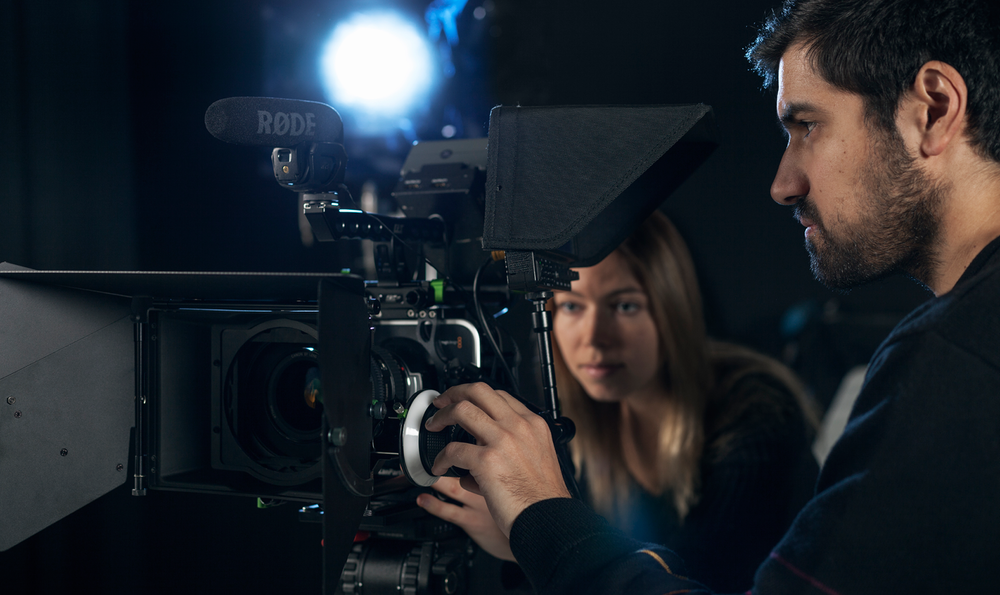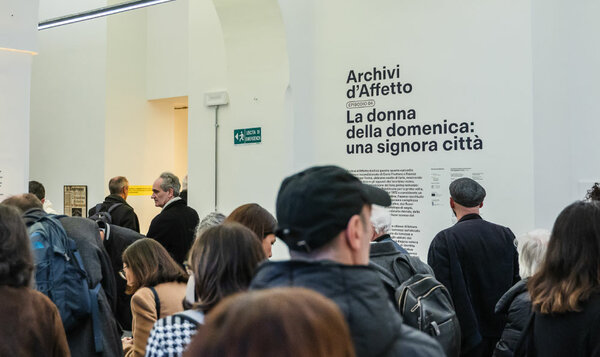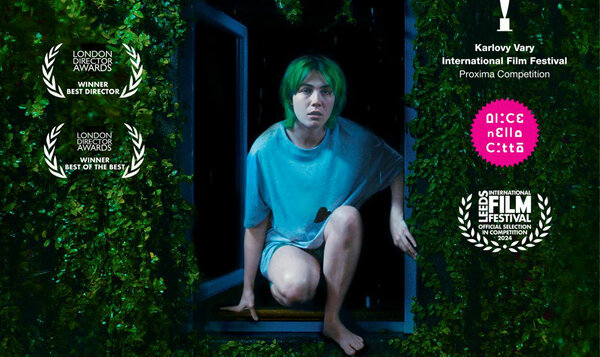Professional video production has become an indispensable activity for the effective communication of brands, companies and creators.

Creating professional videos: tools, working steps and ideas
Date
08 November 2024
Nowadays, the creation of quality content requires a combination of technical and creative skills that must inevitably evolve in step with the increasingly high expectations of the public and the advancement of technology.
A professional Video Maker possesses in-depth proficiency with state-of-the-art tools and techniques, combined with a special attention to detail at each stage of the process.
The essential tools for videomaking
The quality of a professional video largely depends on the equipment used to make it.
Selecting the right tools is the first step in the video production process as it not only affects the quality of the end result but also influences the creative possibilities available.
To ensure high professional standards, a complete set of tools should include:
- Main shooting equipment: professional video cameras or mirrorless cameras with advanced video capabilities in 4K resolution or higher and with interchangeable lenses for different shooting situations.
- Professional audio system: directional microphones, wireless lavaliers, external audio recorders and microphone stands.
- Lighting: professional LED light kit, softboxes to diffuse the light, reflectors and flags to control the lighting.
- Supports and movement: specific tripods, motorised sliders, gimbals for stabilisation and dollies for smooth movements.
- Essential accessories: external monitors, backup batteries, high-speed memory cards, ND filters.
The choice of tools is determined first and foremost by the available budget, but also by the specific requirements of the project and the type of content to be created.
Pre-production: planning for success
The pre-production phase determines the success of any video project. Careful planning makes it possible to optimise time and resources, prevent problems during filming and guarantee a quality end product.
The process first includes the defining the creative concept and communication goals, followed by the developing the script that must take consider the target audience and the message to be delivered. Creating a storyboard is also important for visualising key scenes and planning the necessary shots.
Logistics planning can include:
- location scouting and verification of necessary permits;
- casting of actors or talents;
- creation of a detailed production plan;
- budget definition and resource allocation;
- organising the crew and allocating roles.
Well-structured pre-production lays the foundation for smooth and efficient work, minimising unforeseen events and maximising the quality of the final product.
Professional video shooting techniques
Professional filming techniques are at the heart of video production and require a deep understanding of both technical and artistic aspects. Mastering these elements makes it possible to transform a simple shot into an engaging and high-impact visual narrative, where every choice contributes to effectively communicate the desired message.
These fundamental principles are divided into three main areas: composition and framing, camera movement and lighting.
Composition and framing
Framing composition requires knowledge of precise rules to create balanced and powerful images. These include:
- • The rule of thirds, which divides the frame into nine sections, allowing key elements to be placed at intersecting points to guide the viewer's gaze.
- • The guiding lines in the frame creating natural visual paths that add dynamic energy and depth to the composition.
- • The depth of field, which is controlled through the aperture and allows the main subject to be isolated from the background, creating an effective visual hierarchy.
- • The camera angle, which influences the perception of the scene: from above it may suggest vulnerability, from below it communicates power.
- • The frame rate that should be chosen according to the desired effect: 24fps for a cinematic look, higher frame rates for slow motion.
Camera movements
Camera movement is a key element in guiding the audience's attention, and can be achieved through various filming techniques, including:
- • Fluid panoramas, which gradually reveal the scene, raising tension and expectation.
- • Tracking shots, which follow the action while keeping the subject in frame, engage the viewer.
- • The gimbal, which allows complex movements while maintaining image stability.
- • Zoom and dolly, which create dramatic effects and natural transitions between scenes.
- • The combination of different movements to enhance the narrative with elaborate sequences.
Lighting
Professional lighting requires a proficiency in various lighting management techniques, from the most basic to the most complex, including:
- • The three-point lighting set-up (key light, fill light and backlight), which creates professional basic lighting.
- • Advanced techniques, which make it possible to create specific atmospheres by manipulating light intensity and direction.
- • Shadow management, which adds depth and can enhance dramatic elements.
- • The balancing of natural and artificial light, which ensures consistent and realistic lighting.
- • Filters and modifiers to control and shape light for creative effects.
Post-production: editing and finalisation
Post-production is a phase that requires special attention to detail as the raw material is transformed into a cohesive and professional final product.
The process begins with meticulously organisaing the footage and selecting the best shots. Editing must follow a narrative rhythm that maintains the audience's interest.
Colour correction ensures visual continuity between different shots, while colour grading establishes the overall aesthetics of the video, creating the desired atmosphere by manipulating colours and contrasts.
Equally important at this stage is audio post-production, which includes cleaning the ambient sound, adding music and any sound effects, and professional mixing to achieve a balanced and immersive sound.
Creative ideas for engaging videos
Regardless of context, what distinguishes a memorable video from an ordinary one is creativity.
The creative approach must be guided by an understanding of both the target audience and the communication goals.
A variety of innovative techniques can be experimented with to create distinctive content, including visual storytelling, integration of motion graphics and animation. The main objective of each production is to succeed in developing an original and recognisable visual language through the combination of different shooting styles and techniques.
Do you want to develop professional skills in the field of video production?
IED offers specific courses to learn about all aspects of design, from pre-production to post-production, with a focus on the latest industry trends.








